The first frost has fallen. Days are now shorter than nights. Deciduous plants are ceasing chlorophyll production, allowing the true colors of their foliage to shine through. The insects still around are busy getting ready for winter in a variety of ways – provisioning nests, laying eggs, pupating, or just finding a spot to hunker down. As you tidy up your yards and gardens this fall, keep the bugs in mind and leave the leaves where you can!
Submit your bug pictures to bugid@missoulabutterflyhouse.org (and remember to include your name, the date, and the location where you took the photo)!
Header photo: Common Checkered-skipper (Burnsius communis). These beautiful little butterflies can be found all across North America – from southern Canada into Mexico and in all U.S. states. Here in Montana, they can be found from June into October. They are one of the few butterflies in Montana that has two broods during our short season. Adults will roost on tall plant stems beginning in late afternoon, and tend to be found in open, sunny places with low vegetation and some bare soil, including prairies, meadows, fields, roadsides, landfills, yards, gardens, pastures, openings, and trails in woods. The caterpillars make folded-leaf nests in which they live and feed; the fully-grown caterpillars will overwinter. – Klara Briknarova, September 6, 2025, Rocky Mountain Gardens, Missoula, MT

A Sand Wasp
Stizoides renicinctus
Only two species in the genus Stizoides are found in North America, and S. renicinctus is the only species found in Montana. It is a kleptoparasite of other apoid wasps (family Apoidea): the female will locate a nest that has already been provisioned, kill the host egg, and deposit her own egg so the larva can feed from the stored larder. The adults feed on nectar.
Connie Geiger, September 10, 2025, Helena, MT

Spined Soldier Bug
Podisus sp.
Named for the pointed front outer margins of the prothorax – the “shoulders” – these predatory stink bugs feed on other arthropods, particularly the larvae of Lepidoptera (moths and butterflies) and Coleoptera (beetles). As with their plant-feeding stink bug relatives (family Pentatomidae), these insects possess piercing and sucking mouthparts. Unlike their vegetarian kin, though, whose mouthparts point only downward or fold backward beneath the body, these tiny predators are also able to extend their mouthparts forward. Several generations can be produced each year during the growing season, and adults will overwinter in protected areas such as bark crevices in trees or under leaf litter on the ground.
Connie Geiger, September 10, 2025, Helena, MT

Anise or Old World Swallowtail
Papilio sp.
It can be difficult to distinguish between adult forms of the Anise Swallowtail (Papilio zelicaon) and the very similar Old World Swallowtail (Papilio machaon); telling the caterpillars apart is even tougher. Anise Swallowtails are widespread and numerous in the west and feed primarily on plants in the parsley family (Apiaceae), including the introduced anise-flavored sweet fennel (Foeniculum vulgare) for which the species is named; Old World Swallowtail caterpillars feed mostly on plants from the genus Artemisia. The larvae will overwinter as chrysalids, emerging as some of the first swallowtails we see in the spring, flying from late April to July among bare hills, mountains, gardens, fields, vacant lots, and roadsides.
Thom Garrett, September 12, 2025, Missoula, MT
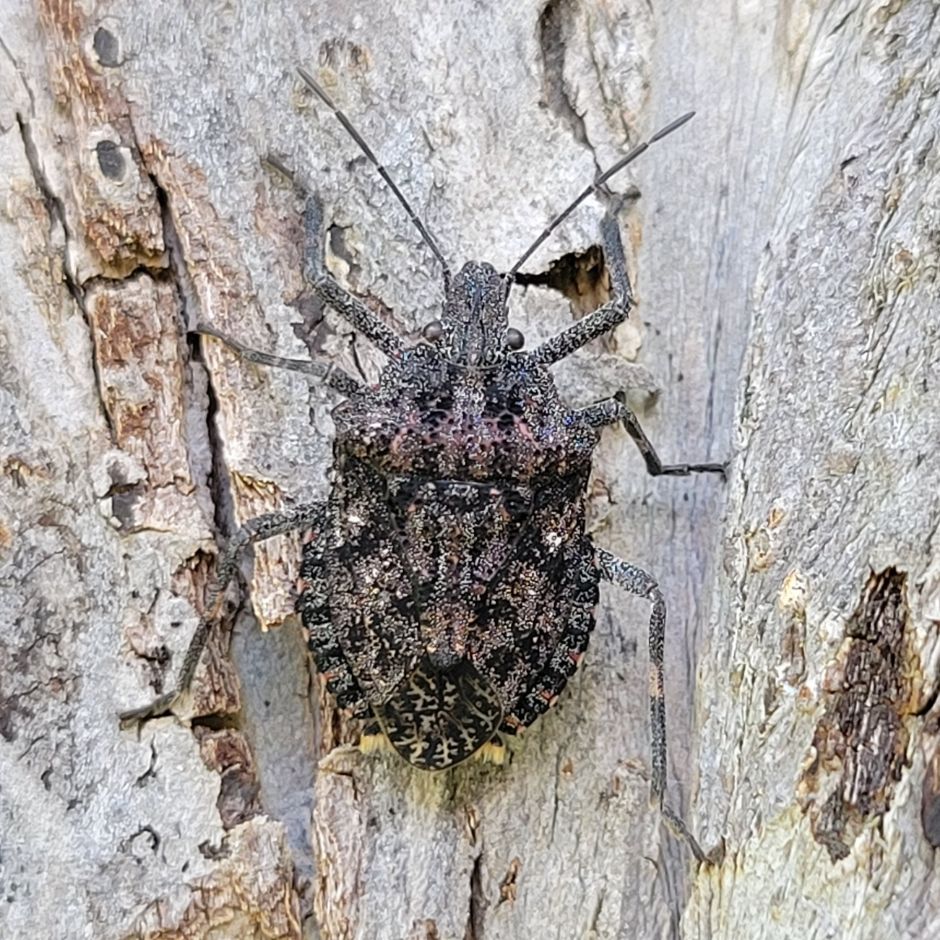
Rough Stink Bug
Brochymena sp.
Does this stink bug look like a familiar house guest? They’re not looking to eat anything, just a warm place to hang out until spring. That said, stink bugs are generally not very welcome house guests for one obvious reason: they stink. As a defensive measure, stink bugs emit foul smells to ward off predators – or occasionally an unwitting human trying to remove it from their home. As true bugs, they have straw-like mouthparts that they use to pierce and consume plant tissues, and many are considered pest species.
Klara Briknarova, September 13, 2025, Missoula, MT
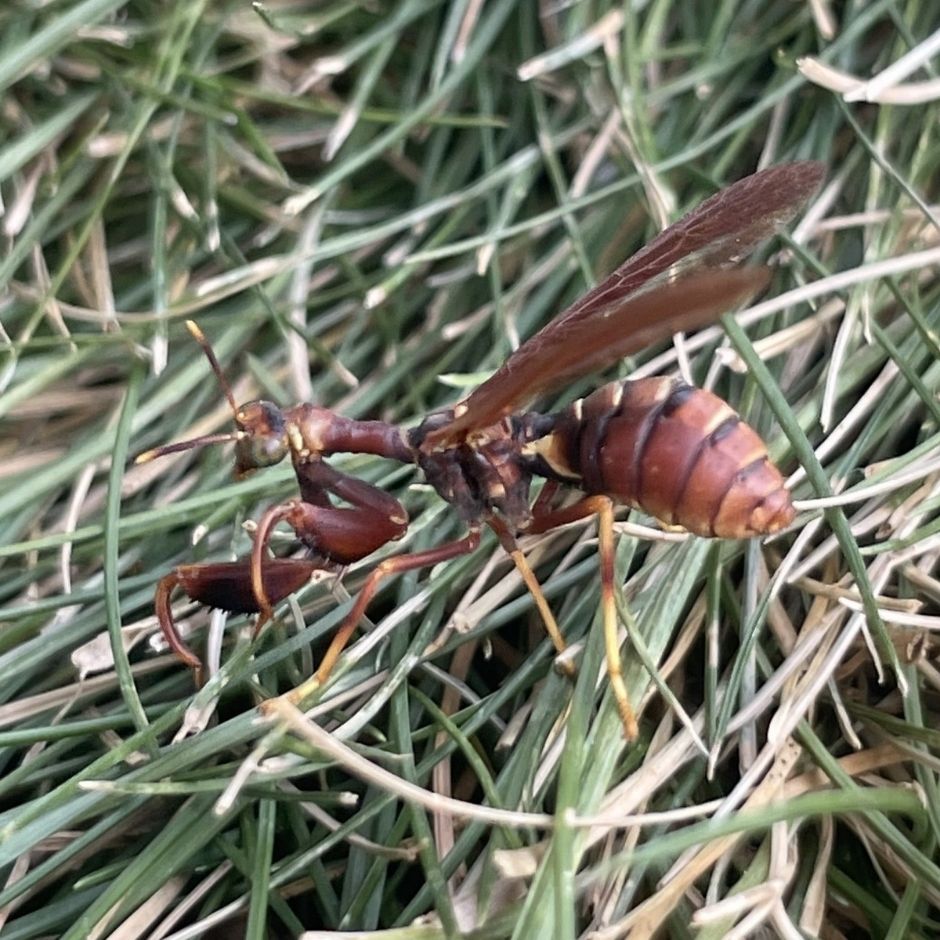
Brown Wasp Mantidfly
Climaciella brunnea
At just about an inch long, the Brown Wasp Mantidfly (Climaciella brunnea) is a bizarre looking animal. It looks as if the front end of a praying mantis was combined with the back end of a wasp. Like mantids, mantidfly adults are impressive predators, using their spiny front legs to capture small insect prey. If you don’t think the adults are amazing enough, after hatching from its egg, a mantidfly larva needs to find and burrow into a spider’s egg sac for its food source. Since an egg sac is not always around when you need one, the larva will first find a spider and hitch a ride. If it is a female spider, the larva rides along until the spider lays an egg sac and then jumps ship. If it is a male spider, the larva waits until the spider mates and then transitions to the female. Amazing! And to be clear, this insect is neither a mantis, nor a fly, nor a wasp. It’s a relative of lacewings, in the order Neuroptera (family Mantispidae).
Andrea Dudley, September 14, 2025, Lolo, MT
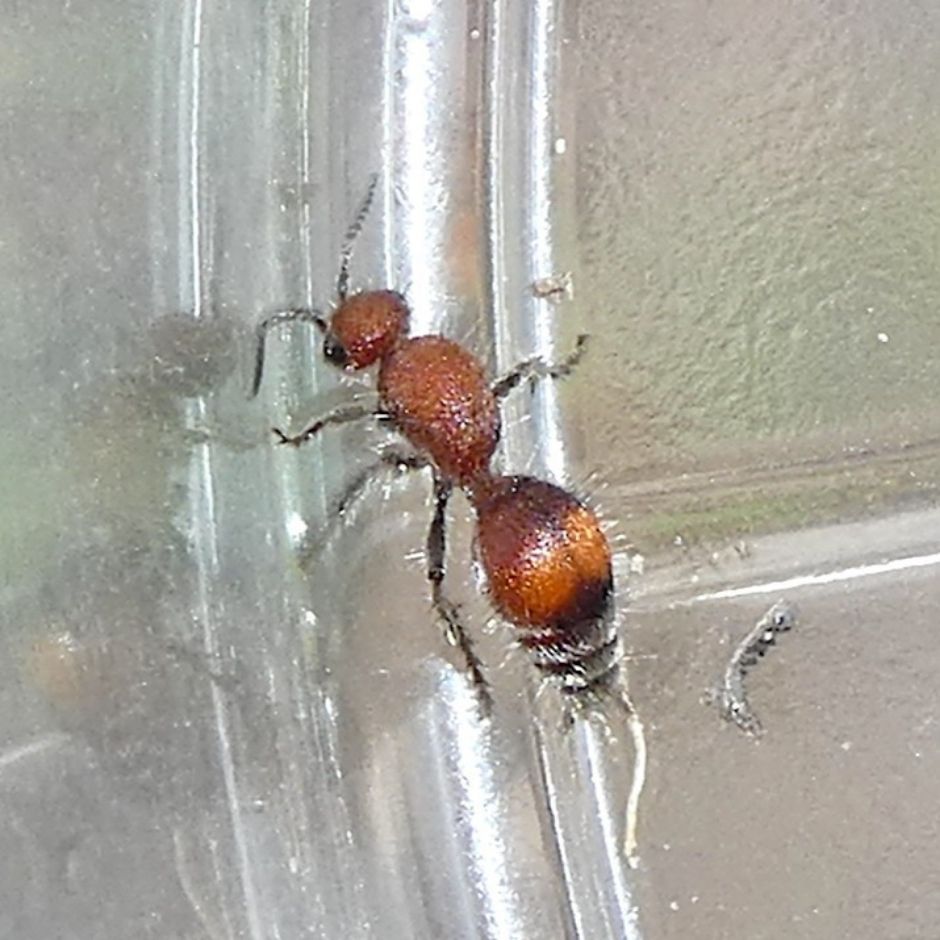
Velvet Ant
Dasymutilla sp.
Velvet Ants (family Mutillidae), named for their hairy ant-like bodies, are actually more closely related to many wasps than ants. Some species have a reputation for a very painful sting – according to Justin Schmidt, developer of the Schmidt Pain Index, the sting of the related Glorious Velvet Ant (Dasymutilla gloriosa) is “instantaneous, like the surprise of being stabbed. Is this what shrapnel feels like?” They are not aggressive, and although cute and seemingly pettable, it’s best to look and not touch. The winged males often visit flowers and have been observed taking nectar; the females are wingless and are usually found crawling on the ground or vegetation. As a group, velvet ant larvae are ectoparasitoids (a parasite that lives externally on another animal and eventually kills it) of immature insects, especially ground-nesting bees and solitary wasps.
Glenn Marangelo, September 14, 2025, Missoula, MT
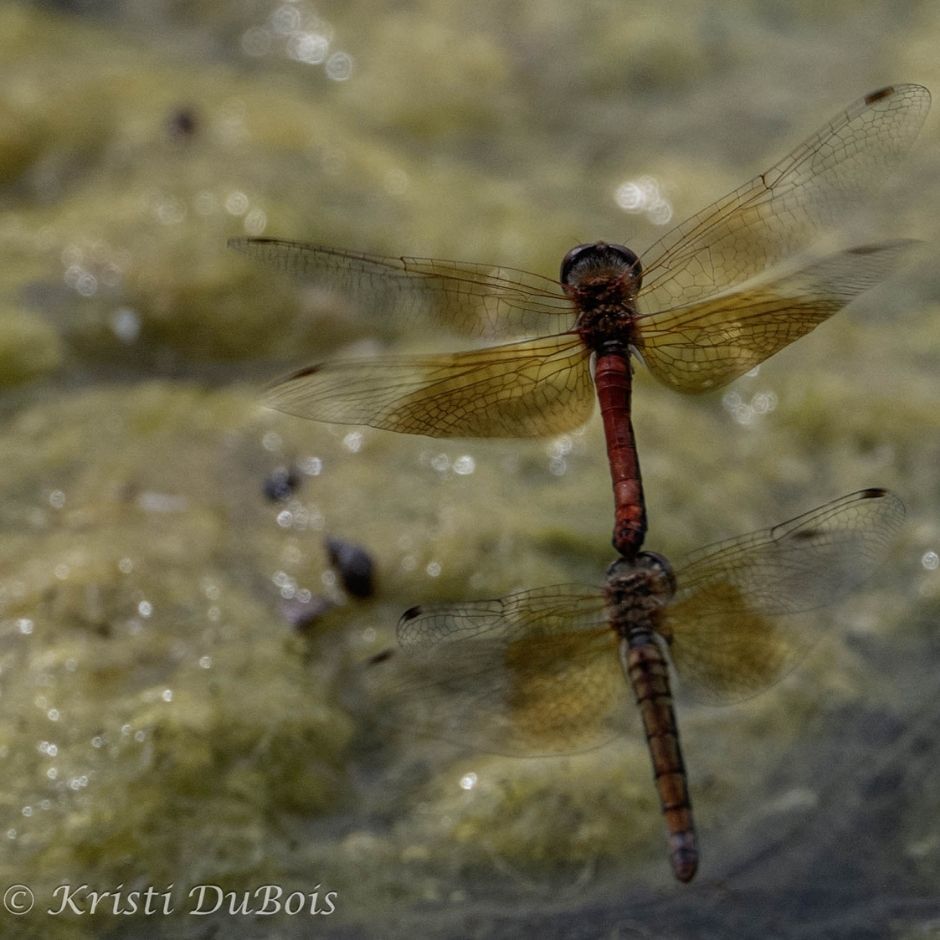
Band-wing Meadowhawk
Sympetrum semicinctum
The reddish-brown bands on its wings make the Band-winged Meadowhawk (Sympetrum semicinctum) one of the easiest species of meadowhawk to identify. Preferring shallow ponds, marshes, and bogs with slightly flowing water, its habitat options are more limited than other dragonfly species because the nymphs apparently do not compete well with other dragonfly species and are highly vulnerable to fish predation. Found throughout the United States and southern Canada, this species is most common in late summer and remains on the wing into October.
Kristi DuBois, September 14, 2025, Missoula, MT
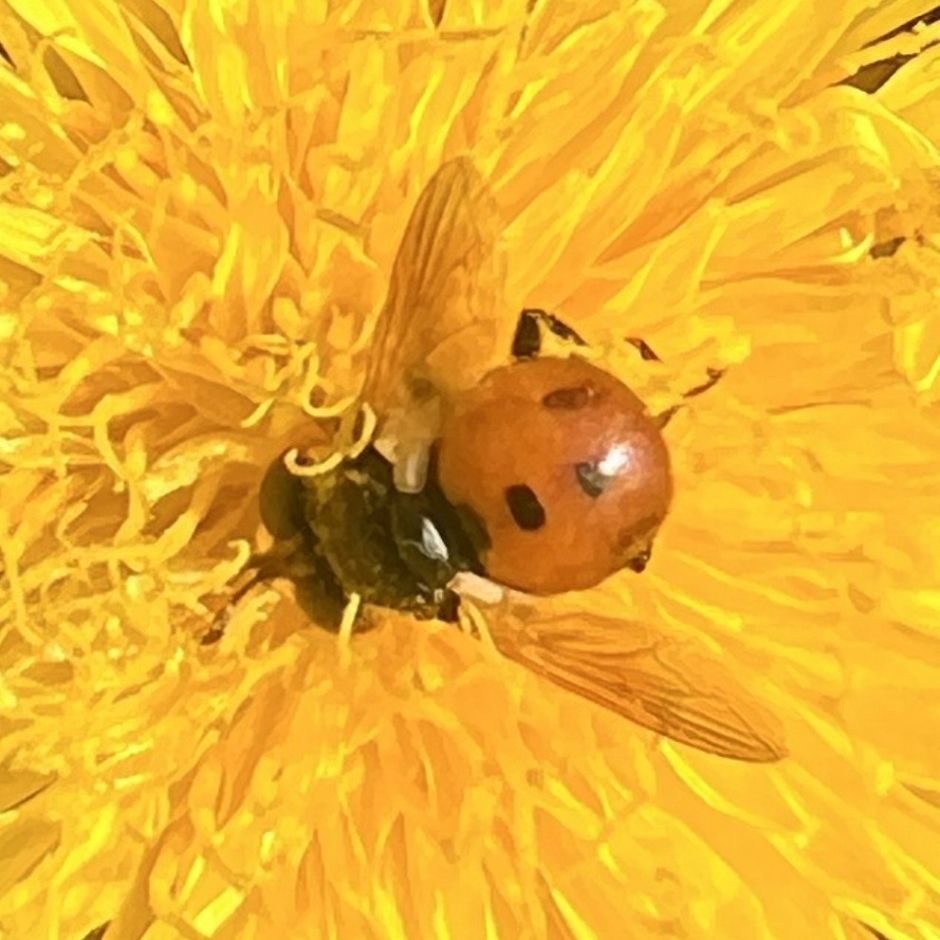
Tachinid Fly
Gymnosoma sp.
Tachinid flies are mostly robust flies with spiny abdomens. This group, however, lacks spines on the abdomen, with Gymnosoma meaning “naked body.” Adults sip nectar from flowers, but larvae prefer protein. Of the 1,345 species of tachinid flies in North America, larvae are almost exclusively internal parasitoids of other insects, especially caterpillars. Typically, the females lay eggs on the host, and the larvae burrow inside. They feed within the host, avoiding vital organs until the last stage of their own development (usually killing their host). Hosts for this genus include adult and larval stink bugs and shield bugs (family Pentatomidae).
Mike Miller, September 16, 2025, Missoula, MT
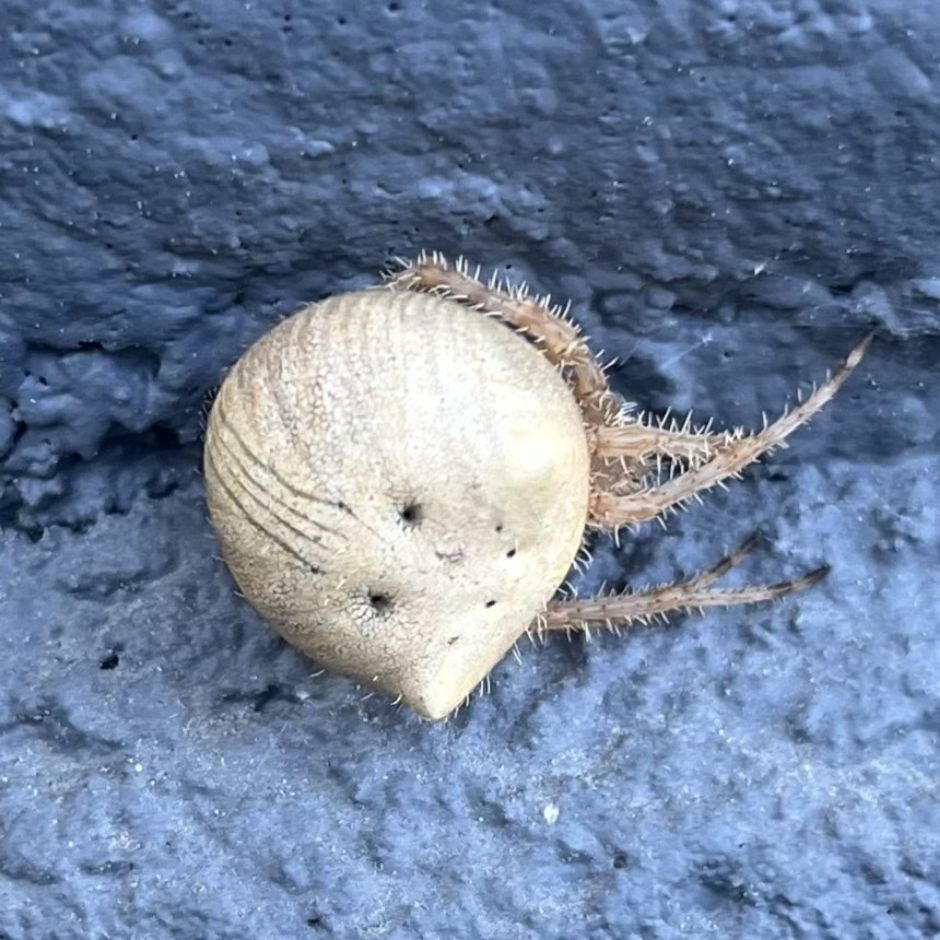
Gem-shaped Orbweaver
Araneus gemma
It’s hard to say for certain without a better view of the front of its abdomen, but we believe this might be a Gem-shaped Orbweaver (Araneus gemma). Making identification even more difficult, this species is believed to mate with the closely-related Cat-faced Orbweaver (Araneus gemmoides). Both species are found throughout western North America, and both are harmless to humans. As we move into late summer and fall, orbweaver females become more noticeable as they grow and prepare to lay eggs. They stick around until the first hard freeze, at which point the adults die off. Then, it’s up to the egg sac she leaves behind to usher in the next generation in the spring.
Greg Zmaks, September 17, 2025, Lolo, MT
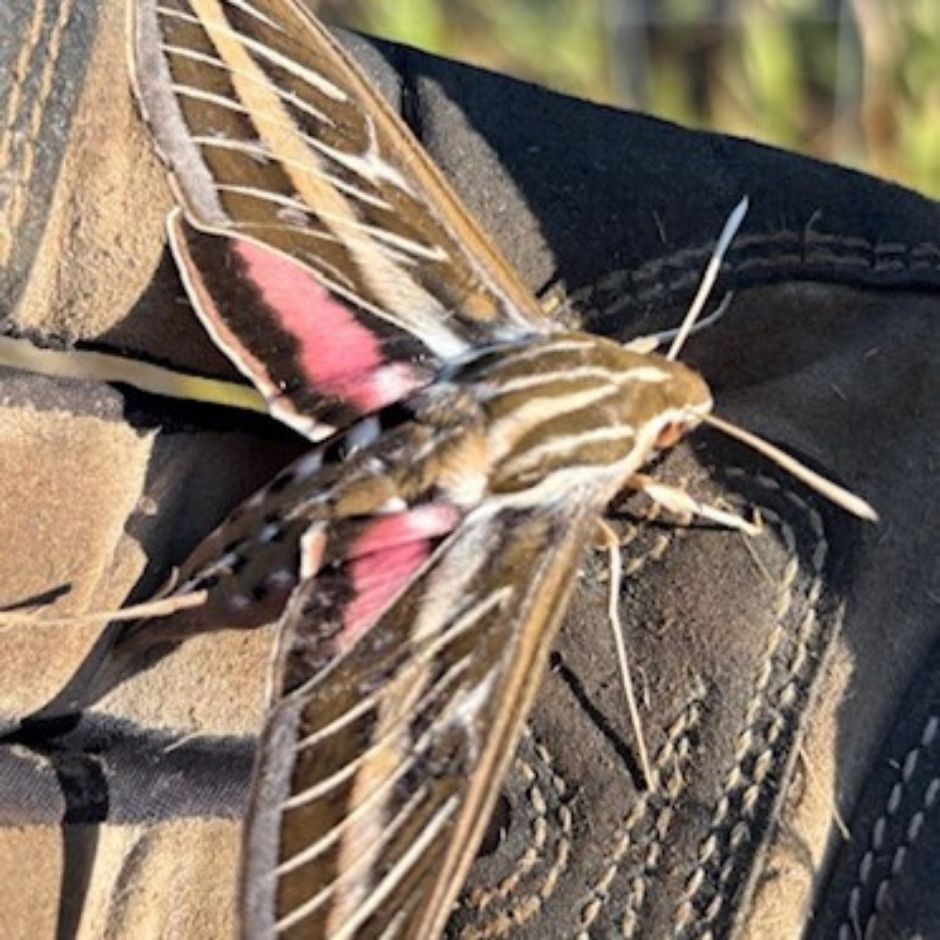
White-lined Sphinx Moth
Hyles lineata
The White-lined Sphinx Moth (Hyles lineata) is one of the most abundant hawk moths in North America, having a wide geographic range from southern Canada into Central America. It occupies open habitats, including deserts, suburbs, and gardens. It is often mistaken for a hummingbird thanks to its enormous size and rapid wing beating while it feeds from flowers. Here in Montana, the caterpillars overwinter, with adult moths appearing in May. After mating and laying eggs, we typically see the next generation of adults (the generation currently on the wing) in late summer and early fall.
Scott Martin, September 17, 2025, Thompson Falls, MT